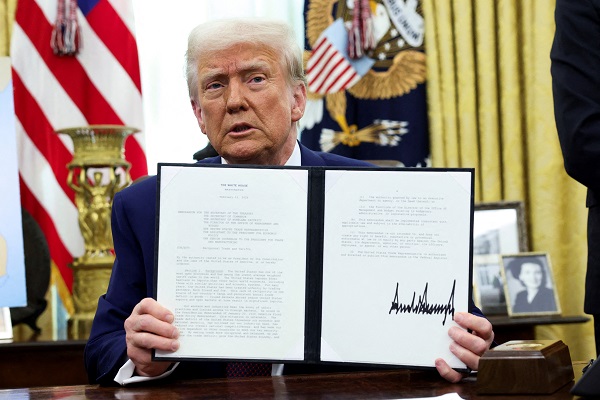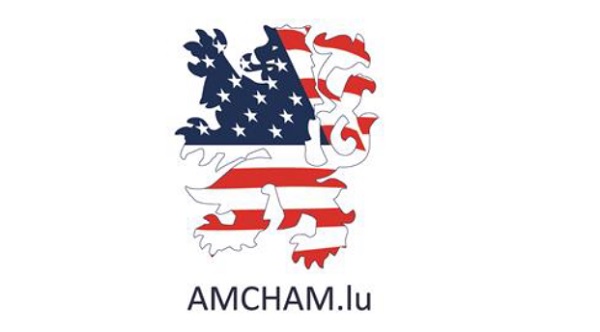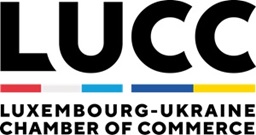 US President Donald Trump holds an executive order about tariffs increase in the Oval Office of the White House in Washington, US, 13 February 2025;
Credit: Reuters/Kevin Lamarque
US President Donald Trump holds an executive order about tariffs increase in the Oval Office of the White House in Washington, US, 13 February 2025;
Credit: Reuters/Kevin Lamarque
WASHINGTON (Reuters) - On Thursday 13 February 2025, US President Donald Trump tasked his economics team with devising plans for reciprocal tariffs on every country taxing US imports, ramping up prospects for a global trade war with American friends and foes.
"On trade, I have decided for purposes of fairness, that I will charge a reciprocal tariff, meaning whatever countries charge the United States of America, we will charge them. No more, no less," Trump told reporters in the Oval Office.
Trump signed a memo ordering his team to start calculating duties to match those other countries charge and to counteract non-tariff barriers such as vehicle safety rules that exclude US autos and value-added taxes that increase their cost.
Thursday's directive stopped short of imposing fresh tariffs, instead kicking off what could be weeks or months of investigation into the levies imposed on US goods by other trading partners and then devising a response.
Targets include China, Japan, South Korea and the European Union. The Republican president's latest round of market-rattling tariffs has ratcheted up fears of a widening global trade war and threatened to accelerate US inflation.
Wall Street - anxious that fresh tariffs may add to inflation and keep the Federal Reserve from cutting interest rates further - breathed a sigh of relief, for the moment, with US stocks adding to the day's gains. A gauge of global stocks touched a record high, and yields on US Treasury securities fell.
Howard Lutnick, Trump's pick for commerce secretary, said the administration would address each affected country one by one and said studies on the issue would be completed by 1 April 2025. That is also the deadline Trump set on his first day in office for Lutnick and other economic advisers to report to him with plans to reduce the chronic trade imbalances that Trump sees as a US subsidy to other countries.
Trump, who campaigned on a pledge to bring down consumer prices, said prices could go up in the short term as a result of the moves. "Tariffs are great," he said.
A White House official, who spoke to reporters before Trump's event in the Oval Office, said the administration would study countries with the biggest trade surpluses and highest tariff rates first.
Trump's tariffs would match the higher duties charged by other countries, he said, and would aim to counteract burdensome regulations, value-added taxes, government subsidies and exchange rate policies that can erect barriers to the flow of US products to foreign markets.
"They effectively don't let us do business. So we're going to put a number on that that is a fair number. We're able to accurately determine the cost of these non-monetary trade barriers," Trump said.
Open to talks
The broad announcement appeared designed at least in part to trigger talks with other countries. The White House official said Trump would gladly lower tariffs if other countries lowered theirs. The new tariffs would avoid a "one size fits all" approach for more customised levies, he said, though he did not rule out a flat global tariff.
"It’s a relief that the administration isn’t rushing to impose new tariffs, and we welcome the president taking a more nuanced, inter-agency approach," said Tiffany Smith, vice president for global trade at the National Foreign Trade Council. "Ideally, this process will result in us working with our trading partners to lower their tariffs and trade barriers as opposed to increasing our own."
Trump, who took office on 20 January 2025, has already announced tariffs on all steel and aluminum imports beginning on 12 March 2025, imposed 10% tariffs on goods from China, and put a 30-day hold on planned tariffs on goods from neighboring Canada and Mexico.
On Monday 10 February 2025, Trump said he was also looking at separate tariffs on cars, semiconductors and pharmaceuticals. On Thursday, he said car tariffs would be coming soon.
"This is beyond negotiation. It's to be taken very seriously," said Josh Lipsky, director of the Atlantic Council's GeoEconomics Center and a former adviser to the International Monetary Fund who also served in the Obama White House.
"I do think every country has been put on notice. And if you were going to implement reciprocal tariffs on the scale he's talking about, this is actually how you would go about it," he said.
Indian Prime Minister Narendra Modi, who met with Trump in Washington on Thursday, oversees a government that imposes the highest tariffs on US exports of any major US trading partner.
Trump said Modi offered to talk about easing tariffs, buying more US oil, gas and combat aircraft, and potential concessions. The leaders agreed to work towards a deal to resolve the trade concerns.
Such a deal could be done within the next seven months, Indian Foreign Secretary Vikram Misri said after the meeting. A senior Trump administration official said a deal could be reached as soon as this year.
"We are being reciprocal with India," Trump said during a press conference. "Whatever India charges, we charge them."
Trade experts say structuring the reciprocal tariffs that Trump wants poses big challenges for his team, which may explain why the latest duties were not announced earlier in the week.
Experts say Trump could turn to several statutes, including Section 122 of the Trade Act of 1974, which would only allow a flat rate maximum of 15% for six months, or Section 338 of the Tariff Act of 1930, which provides authority to act against trade discrimination that disadvantages US commerce, but has never been used.
Trump also could use the same International Emergency Economic Powers Act used to justify the tariffs imposed on China and pending for Canada and Mexico.








